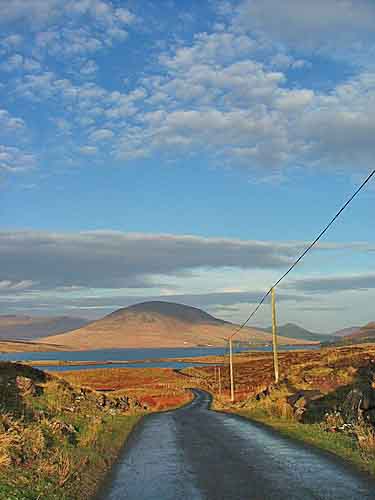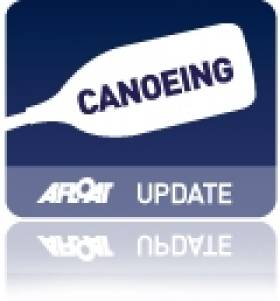Displaying items by tag: Mulranny
South Carolina Rubbish Bin Crosses Atlantic to Co Mayo Beach
A refuse barrel from South Carolina has been found washed up in an unexpected spot — on a beach more than 5,500km away in Co Mayo.
Myrtle Beach City Government shared their surprise email exchange with Keith McGreal, who discovered the blue barrel at the weekend while walking his local beach in Mulranny, between Clew Bay and Blacksod Bay.
McGreal contacted officials in Myrtle Beach — perhaps best known in this part of the world for its abundance of golf courses — going by the labels that were still fastened to the trash can despite its epic journey.
It’s suspected that following strong winds or a storm blew it into the North Atlantic, a favourable Gulf Stream current was responsible for taking the coastal rubbish receptacle so far off course.
“We typically remove trash containers from the beach before a hurricane, but this one apparently had a mind of its own,” the city said on social media, adding: “We’ve already had a city employee volunteer to come fetch it.”
Sea Kayaking Symposium in Mayo this October
The Irish Sea Kayaking Association (ISKA) will host its annual symposium on 8-9 October 2011 in Mulranny, Co Mayo.
The activity-filled weekend at the Mulranny Park Hotel will include training workshops, peer paddles and talks by leading kayaking experts.
Delivering the keynote speech will be Jasper Winn, author of Paddle: A Long Way Around Ireland, who will use a mix of digital slides, video clips and live music to illustrate his account of his trip around the country by kayak.
For more details visit the ISKA website at irishseakayakingassociation.org.
Bellacragher Bay Boat Club

Bellacragher Bay Boat Club
Bellacragher Bay Boat Club was formed in 2003 by Seamus Butler, Claggan and Brian Masterson Owenduff, in response to interest from people in Achill, Mulranny and Ballycroy. In choosing a name, they picked the Bay that links all three areas together – Bellacragher Bay, pictured left.
A introduction to sailing week was held on the four days after the August Bank Holiday 2003. On completion of the training, five 14ft boats sailed 6 miles to innisbiggle for the Island Festival.
The sailing week has continued to the present and grown significantly. In 2008 approx 60 people took part and there was a fleet of 18 boats. The Club has had considerable success in obtaining training funding for commercial and leisure marine courses with Leader and MFG providing the funds.
The Club members come from varied backgrounds but many have strong marine backgrounds and experience in all manner of boating activities, cruiser sailing, dinghy sailing, canoeing, powerboating, commercial fishing and diving/sking/kiting.
In August 2008, the club was offered affilliation with The Irish Sailing Association, The ISA is responsible for most marine training in the country, their courses and certificates are recognised and approved by the Irish Government. Membership of The ISA was a major stepping stone in the advancement of the club, the ISA were very impressed with the club organisation and asked if they could use some of their techniques.
In 2009, the Club plans to introduce a weekly sailing session in Claggan. This will be on a weekday evening, to suit tides, starting in may and ending in October. Sailing will be on 420s 470s, Lasers, andToppers with a fully equipped and qualified safety boat and crew supervising the sailing. Any one that wishes to have a go is very welcome to come along, even if you just want to have a look. There is always a few on the shore, getting boats ready,repairing them or looking after the BBQ. The Sailing will follow the ISA syllabus and arrangements have been made for an ISA Examiner to visit the Summer Sailing camp to assess Sailors and test them for the various sailing levels.
The Sailing branch of the club is also home to the Sea Scouts of the 22nd Mayo Troop. The club provides the scouts with all the waterborne experience they need. In addition to dinghy sailing, short cruises to Clare Island, Inishturk and Inishboffin take place during the summer where possible.The boats used are sailing cruisers and powerboats/sports cruisers. There are usually crew places available.
There is so much to learn about the sea that a short article is barely able to touch on the subject but people are very welcome to join or visit one of the sessions. You may observe Navigation, ropework, capsize/survival techniques or first aid and may find that it appeals to you!
For further information contact Seamus Butler 087 657 9348 or email [email protected]
Bellacragher Bay Boat Club, Brian Masterson, Owenduff, Achill, Co Mayo. Tel: 087 237 0102, email: [email protected]
Have we got your club details? Click here to get involved
























































